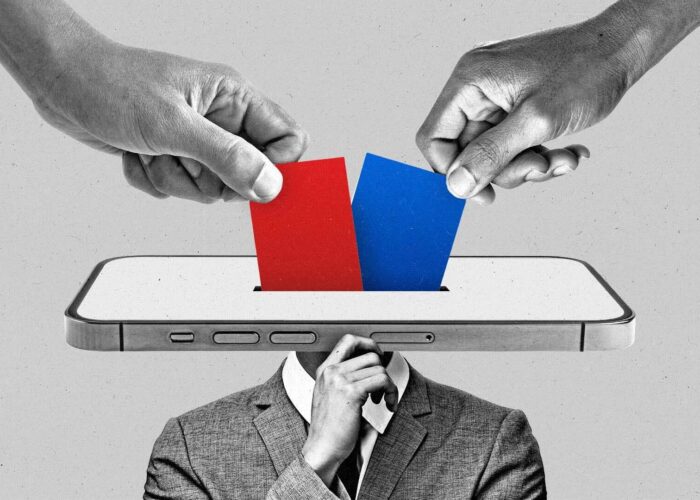Here’s a simple fact: success is no longer measured solely by clicks, impressions, or sales conversions. While these metrics have their value, they fail to capture a critical dimension of marketing effectiveness: brand perception. How do customers feel about your brand? Are they aware of your products or services? Do they trust your value proposition? This is where brand lift studies come in. Brand lift studies offer a more comprehensive way to assess the impact of advertising campaigns by measuring changes in consumer perception, awareness, consideration, and intent. For businesses operating in both B2B and B2C sectors, brand lift studies have emerged as the go-to metric for understanding advertising success in a world where decision-making is increasingly influenced by emotional and cognitive connections to brands.
The Evolution of Advertising Metrics
From CTR to Brand Lift: The Shift in Focus
For years, click-through rates (CTR), impressions, and conversions have been the dominant metrics for evaluating advertising campaigns. While these metrics provide a quantitative view of ad performance, they paint an incomplete picture. A high click-through rate doesn’t necessarily indicate positive brand perception, and a focus solely on conversions can obscure long-term brand-building efforts.
Modern audiences are savvier than ever and don’t make decisions based on a single touchpoint. Consumers and business decision-makers alike go through complex, multi-stage journeys before choosing a product or service. This requires brands to go beyond transactional data and measure the emotional and intellectual resonance of their campaigns.
Brand Equity and the “Intangible ROI”
Brand lift studies tap into the intangible ROI of advertising campaigns: how they influence consumer mindsets and build brand equity over time. As advertising platforms grow more sophisticated with tools like programmatic targeting, native ads, and influencer marketing, there’s a rising need to measure the success of these strategies in terms of brand awareness, favorability, and purchase intent—not just direct action.
What Are Brand Lift Studies?
Brand lift studies are a form of market research that measures the incremental change in how consumers perceive a brand after being exposed to an advertising campaign. These studies evaluate key metrics like:
- Brand Awareness: Are people aware of your brand or product?
- Ad Recall: Do consumers remember seeing your ad?
- Brand Favorability: How do people feel about your brand?
- Consideration: Are people more likely to choose your product or service over competitors’?
- Purchase Intent: Are consumers more inclined to make a purchase?
By comparing a control group (people who weren’t exposed to the ad) with an exposed group (those who saw the ad), brand lift studies reveal the impact of your campaign on customer perception.
Why Brand Lift Studies Are Critical for B2C Brands
The Emotional Factor in B2C Decision-Making
In the B2C (business-to-consumer) world, buying decisions are often driven by emotions, convenience, and perceived value. Consumers buy products that resonate with their identity, values, or aspirations. For example, a customer choosing a skincare product might prioritize trust in the brand, sustainability, or lifestyle alignment over a purely rational cost-benefit analysis.
Brand lift studies allow B2C marketers to measure how well their campaigns connect with audiences on this emotional level. Metrics like ad recall and brand favorability are particularly valuable for consumer brands aiming to stand out in saturated markets.
Building Long-Term Loyalty
Unlike click-through rates or immediate sales, brand lift studies measure the long-term impact of advertising on customer loyalty. B2C industries like retail, fashion, beauty, and food and beverage thrive on repeat business, and brand perception plays a significant role in ensuring customers return time and time again.
For instance, a fashion brand may use a brand lift study to determine if its ads increased customer perception of the brand as trendy or premium—key factors in driving future purchases.
Examples of B2C Brands Using Brand Lift Effectively
- Coca-Cola: Coca-Cola often measures brand lift to gauge the effectiveness of its lifestyle-oriented campaigns that focus on happiness and togetherness rather than product features.
- Nike: Nike relies on brand lift metrics to assess how its advertising resonates with audiences emotionally, especially through campaigns that emphasize empowerment, equality, and personal achievement.
Why Brand Lift Studies Are Crucial for B2B Brands
Building Trust in a Relationship-Driven Market
In the B2B (business-to-business) sector, the sales cycle is longer, and buying decisions are often made by committees rather than individuals. Trust, expertise, and thought leadership are critical factors that influence B2B buyers.
Brand lift studies are invaluable for B2B marketers because they help measure whether a campaign is successfully positioning the brand as an industry leader or a trusted solution provider. Metrics like brand consideration and favorability provide insights into whether target audiences view the brand as credible and relevant.
Moving Beyond Lead Generation
B2B marketing has traditionally been laser-focused on lead generation and measurable ROI, such as cost-per-lead or pipeline revenue. However, brand awareness and perception are just as critical for B2B success. Buyers are more likely to consider vendors they’re familiar with and have a positive perception of.
Brand lift studies allow B2B companies to understand whether their ads are increasing top-of-mind awareness and influencing long-term buying decisions, even if the results don’t immediately translate into leads.
Examples of B2B Brands Using Brand Lift Effectively
- Microsoft: Microsoft uses brand lift studies to measure how well its ads position it as a thought leader in cloud computing and AI.
- Salesforce: Salesforce leverages brand lift metrics to understand how its campaigns impact brand awareness and customer trust in its CRM solutions.
How to Conduct a Brand Lift Study
Step 1: Define Key Objectives
Identify the specific goals of your campaign. Are you trying to improve brand awareness, change brand perception, or drive purchase intent? The objectives will determine the focus areas of your brand lift study.
Step 2: Create Control and Exposed Groups
Divide your audience into two groups:
- The control group, which will not see your ads.
- The exposed group, which will see your ads.
This setup allows you to measure the incremental lift caused by your advertising.
Step 3: Use Surveys and Polls
Surveys and polls are the most common tools for measuring brand lift. Platforms like Google Ads, Facebook Ads, and LinkedIn offer built-in brand lift studies that collect survey responses from users. For example, after an ad campaign, users may be asked:
- “Have you heard of [Brand X]?”
- “How likely are you to recommend [Brand X] to a colleague/friend?”
Step 4: Analyze and Act on Results
Once the data is collected, analyze it to identify areas of success and opportunities for improvement. For example, if brand awareness increased but purchase intent remained low, you may need to refine your messaging or target audience.
The Benefits of Brand Lift Studies
- Holistic Insights: Unlike traditional metrics, brand lift studies provide a 360-degree view of how ads impact customer perception, bridging the gap between performance marketing and brand marketing.
- Measuring Intangible Success: Brand lift studies capture intangible benefits like emotional connection, trust, and loyalty—factors that are crucial for long-term success but difficult to quantify using traditional metrics.
- Optimizing Campaigns in Real-Time: Modern tools allow marketers to conduct real-time brand lift studies, enabling them to tweak campaigns on the fly for better results.
- Proving the Value of Branding Efforts: For years, marketers have struggled to prove the ROI of branding campaigns. Brand lift studies provide tangible data to justify investment in long-term brand-building strategies, even for industries traditionally focused on short-term performance.
Challenges of Brand Lift Studies
- Sample Size and Bias: Getting a representative sample of your audience can be challenging, especially for niche B2B markets. Ensuring unbiased results requires careful planning and execution.
- Cost and Complexity: Brand lift studies can be resource-intensive, particularly for smaller businesses with limited budgets. However, many advertising platforms now offer built-in brand lift measurement tools that lower the barrier to entry.
- Interpreting Results: The results of a brand lift study are only as good as the interpretation. Brands need skilled analysts to connect the dots between data points and actionable insights.
The Future of Brand Lift Studies
As advertising continues to evolve, brand lift studies are likely to become even more sophisticated. Advances in AI and machine learning will enable marketers to measure brand lift with greater precision and integrate these insights with other campaign metrics. Moreover, as privacy concerns push brands away from cookie-based tracking, brand lift studies provide a privacy-friendly way to assess advertising impact, relying on aggregate data rather than intrusive tracking techniques.
Brand lift studies are not just another buzzword—they represent a fundamental shift in how marketers measure advertising success. In both B2B and B2C industries, where brand perception plays a pivotal role in driving decisions, these studies provide a nuanced, holistic understanding of campaign performance. By embracing brand lift studies, businesses can move beyond transactional metrics to evaluate the true impact of their advertising efforts. Whether you’re building emotional connections with consumers or positioning yourself as a trusted partner in the business world, brand lift studies are the key to unlocking sustained growth and success in the modern advertising era.



